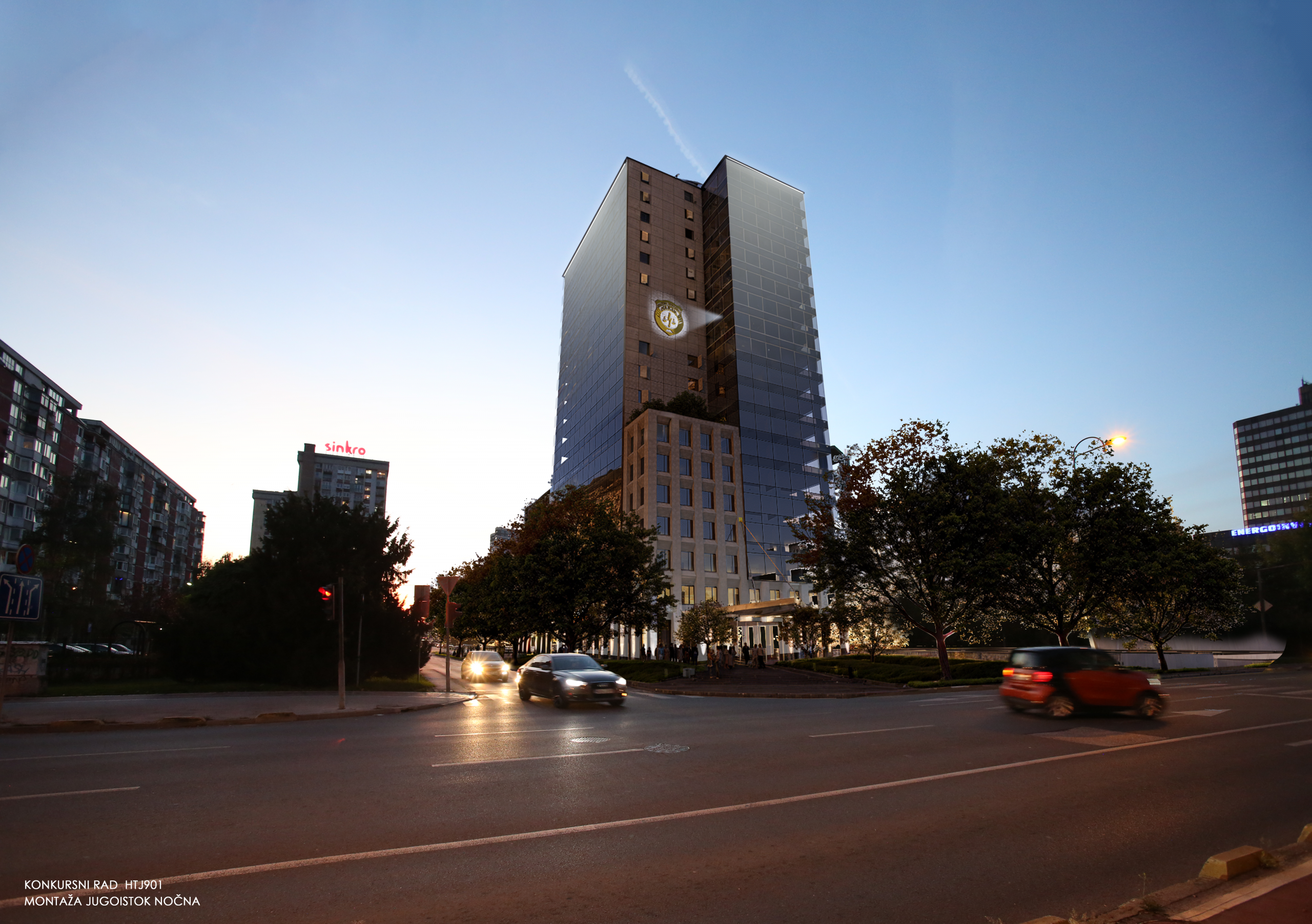Biography
ABOUT
Assoc. Prof. Dr. Haris Bradić, architect, born in Sarajevo. He studied and graduated from undergraduate studies in Sarajevo and Barcelona. In 2014, he received his doctorate from the University of Zagreb. He is the founder of the architectural studio NB Atelier, which operates locally and internationally. A narrower specialty of the activity is residential and administrative architecture based on the principles of bicolimatic architecture, low-energy standards and high comfort of the interior space.
AWARDS OF THE SPEAKER
Big see Award and several international architectural competitions
SHORT DESCRIPTION ABOUT THE OFFICE
The idea to combine science, design, engineering, and sustainability with scholarly work and practical experience finally came to life in 2017. I am proud that our office today is a team of university-educated professionals, dedicated to producing unique architectural designs. A unique design is based on the principles that I have been following for 20 years, coming from my scientific work through the philosophy defined in my doctoral dissertation: Architecture between Human and Space, where a human is the center of the process of creating any architectural space. This means that our projects comply with the requirements related to green architecture, energy-efficiency, low emission of CO2, and great comfort of the interior space. Designing energy-efficient building with careful attention to proportions, patterning, details, material and product specifications, environmental issues, etc. has never been an easy endeavor. Good design inspires and provides a better living environment for decades to come. Whether it’s a modern extension, a period restoration, or a new building, we make sure that our projects are always people-focused and that is how we approach every task. A need for enclosed space, saving of energy, and reducing CO2 emissions, while considering the growing interest in creating adequate interior comfort, inspire us to search for new and unique solutions, both in the context of macro-observations, i.e. aspects of urbanism and in the context of all design and construction details, for each project separately. Today, both local and international markets are our playgrounds, where our expertise spans from residential architecture, interior design, landscaping, urbanism, office buildings, hospitality architecture, to high-rise buildings
AWARDS OF THE OFFICE
- Big see Award
PROJECTS TO BE PRESENTED DURING THE EVENT
Project #1: NUKLEUS
Project #1 category: Workplace. Community
The environment does not have a defined identity for which the future structure would should adapt its exterior design. The goal is to make this structure become the focal point that attracts the eye. Simplicity Through the clean lines of the architectural composition, which It is a combination of high and low square blocks. placed on a pedestal, Green Square – a new center of crossroads The movement of people is enough to create a new epicenter in the city Sarajevo. Movement of people, entrances and exits As already pointed out in the description of the project, Džemala Street The Sheriff’s Office is in a key position, and as a logical step, this It has been identified as the primary source of visitor attractions. From the main road there is direct access to the hotel. Business A shopping mall and a shopping mall. The green square becomes an integral part of the outdoor space, and by the end of the It can be reached via a central staircase, elevators and a pedestrian walkway. ramps located on the east side. Scheme of purpose and movement The main goal is for the new complex to be Unique, timeless, stained
Project #2: 2 RIVERS
Project #2 category: Residential
The project of a residential and business complex – a complex building called Two Rivers / Two Rivers is located in the town of Visoko, Prijeko. It consists of a total of six residential-commercial lamellas, three of which are exclusively residential, and three residential-commercial. The slats are of a block character, each lamella has a recessed ground floor by 130cm in relation to the plane of the façade, while the recessed floor, i.e. the last one recessed by 150 cm. The entire complex is designed as a complex building, consisting of an above-ground part and an underground part – two levels of garages intended for a larger percentage of owners of apartments and business premises, and a smaller one for public character. The location is unique because it is located at the confluence of the Fojnica River and the Bosna River, free and visible from all sides, which in itself offers a special and very pleasant space for the formation of a quiet residential zone with the aim of building low-energy facilities based on the use of renewable energy sources, reduced CO2 emissions, the concept of green building and high quality materials.
Project #3: MUPKS
Project #3 category: Workplace. Community

The form is formed by the interpenetration of two geometric solids – two cuboids. One is horizontally placed on a terrain with a uniform façade rhythm, where flat continuous surfaces from floor to roof alternate with vertically broken strips that integrate openings in a uniform rhythm. Plasticity is created, the play of shadow and light, the play of the drawn and the indented, and forms a uniform rhythm of horizontal repetition of vertical elements. The second cuboid is transparent, with clean contours and lightweight, fully materialized by glass. The tall element penetrates through the pedestal, rests on the same, creating a visual vertical accent and a strong contrast in the composition. The facades of the building symbolize and indicate the internal purpose. Heavy and light, closed open, thorny and smooth, reflective and absorbent. During the day, glass surfaces reflect images of the surroundings, mountains, hills and other built-up things, creating a changing image for the observer, neutralizing the size of the volume in space.








